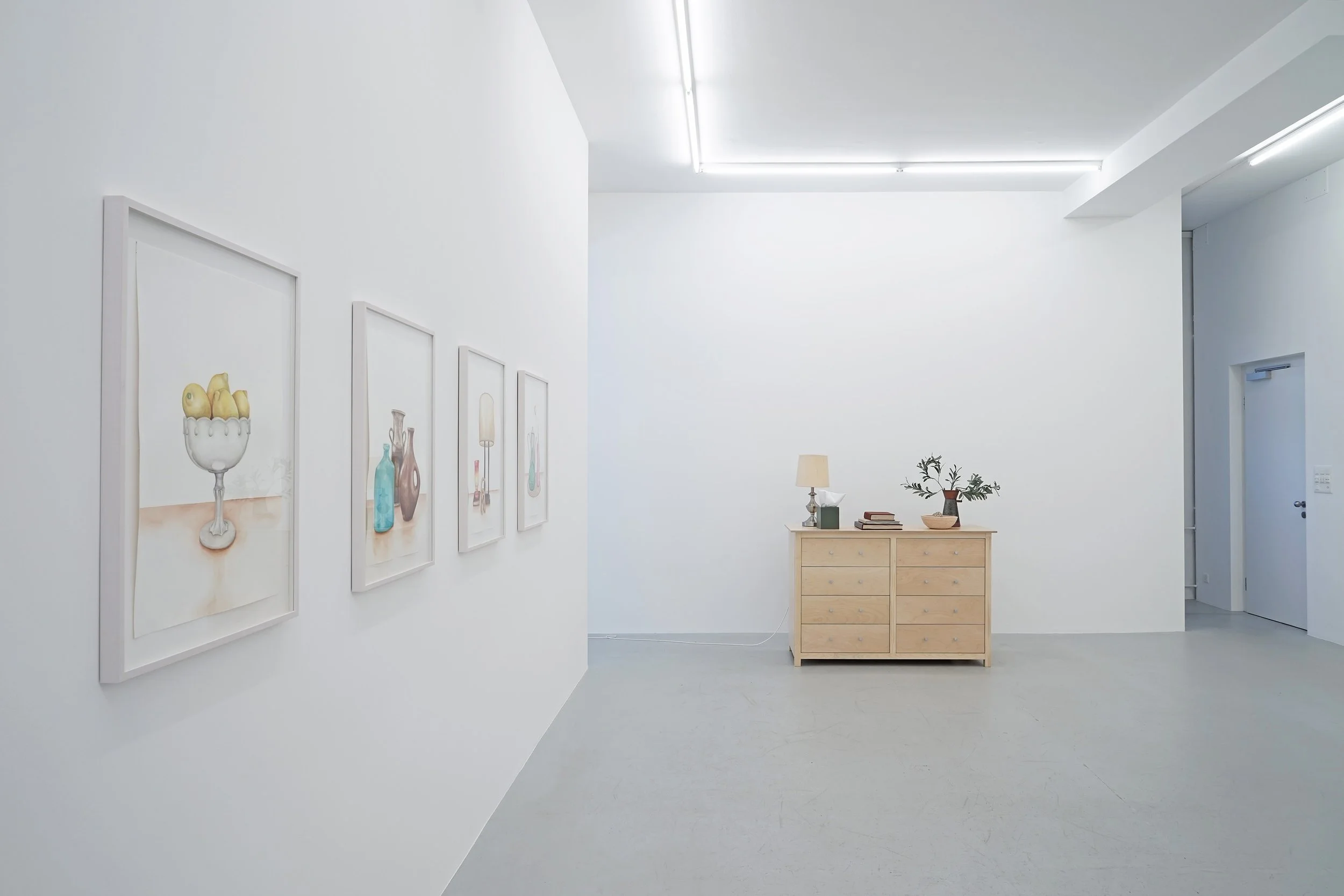
Jamie Isenstein – Home Theater
27 October – 22 December 2023
We are delighted to present Jamie Isenstein’s first solo exhibition with Lullin + Ferrari titled Home Theater in which she tackles the theme of performance in the home, in which private spaces are made public through examining the real estate industry strategy of “staging” a home for sale.
“Don’t fall off the horse”, with this ironic comment on her first day of arrival in Zurich, Jamie Isenstein (1975, Portland, Oregon, USA) said goodnight to our collaborator Anna Konstantinova, who would start a riding lesson the next day. This tightrope walk of not falling off the horse is an important feature of Jamie Isenstein’s art. Her delicate watercolors, installations and sculptures, which she enlivens through her performances, always resonate with a precise, humorous and critical view of the world. The American artist skeptically observes the reality that surrounds her and translates her observations into artistic works. It is these slight shifts and interpretations of the world around her that define her art.
Untitled (staged real estate still life: lemons in milk glass stemmed bowl), 2023
Watercolor and pencil on cotton rag paper, 60.8 x 45.6 cm
Untitled (staged real estate still life: coffee pot, green bottle, tulip in pink vase), 2023
Watercolor and pencil on cotton rag paper, 60.8 x 45.6 cm
In her first solo exhibition at the gallery, Jamie Isenstein tackles the theme of performance in the home, in which private spaces are made public through examining the real estate industry strategy of “staging” a home for sale. In order to increase the chances of a sale, living spaces are furnished and prepared to create an inviting, but generic, atmosphere: vases are artfully arranged, lemons are stacked in bowls, and books are displayed. The idea of “staging” a home is to create an aspirational model for buyers to visualize themselves living a happier life in the home. For the exhibition, Jamie Isenstein has made The Home Theater, a chest of drawers with typical staged objects on it that have been transformed into puppets. Every now and then she, or another puppeteer, disappears into the chest to activate the puppets. These objects including a Kleenex box, a lamp, and a stack of books dance to music composed by Paul Damian Hogan. The music is performed by a music box integrated into the chest.
The Home Theater, 2023
Mixed Media, 142 x 137 x 56 cm
The Home Theater is complimented by six still life watercolors of objects found in actual staged homes for sale. In their presentation, the still lifes adopt stylistic characteristics of The New Objectivity movement. At first glance the they seem a bit sober, especially when viewed individually because objects used to enhance a property are often generic to appeal to the largest number of potential buyers. The watercolors resemble traditional still lifes, however, they take on a deeper meaning when you consider their source. Looking at them all together, their uniformity is strangely striking. When the subjects of the watercolors are compared to the objects on the chest of drawers, the subjects in the watercolors take on a performative quality. Three wall clocks with hands that end in two eyes and a mouth are the audience for the performance. The clocks change emotions as they tick, reinforcing the surrealist mood in the room.
In the second exhibition room, three oil paintings hang in landscape format. Recognizable in the works are a laundry basket next to a green plastic shoe, a cloud formation seen from above and a bookcase. These images are intended for use as humorous backdrops for video conversations. They are merely attached to the wall by hooks and can thus be easily exchanged. These analogue backdrops turn the home office into a literal stage and work-from-home employees into performers. Also in the gallery is a video work featuring students from the University of Tennessee, Chattanooga, as they yawn at each other through two video monitors. This stunning work radiates into the space and is visible from the street causing both gallery visitors and bystanders outside to yawn, creating real connections between the world of art and the general public and between the real world and the virtual world. These connections show the deep humanity in Jamie Isenstein’s art and her wonderful sense of observation.


